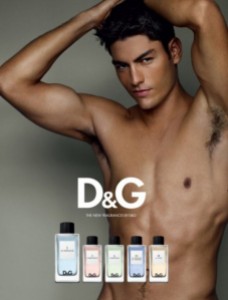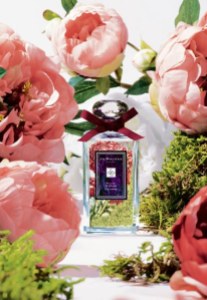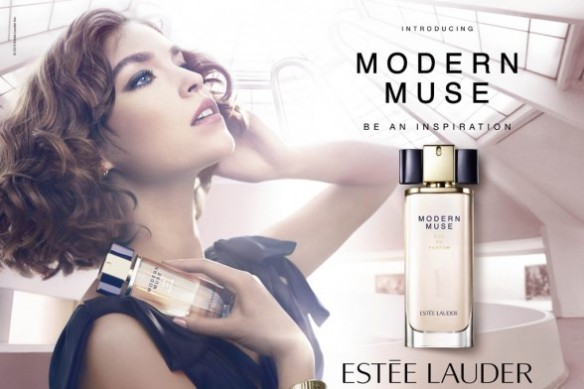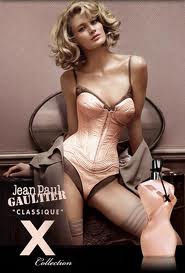The numbers are in for the perfume industry’s sales in 2013 as a whole. I’m always interested in the financial side of the fragrance industry, especially how perfume is doing as compared to the overall beauty market. However, the most fascinating thing this time were changes that occurred in people’s perfume tastes, in the categories of perfumes that were purchased in the last year, and in who was doing the buying. I’m not hugely surprised by what men are doing in the U.S. and U.K., but I was a bit taken aback by a change in the American woman’s buying habits and tastes. I’ll cover all of that in this post, along with: the U.S. sales figures for market leaders like Estée Lauder, Elizabeth Arden, Coty, and Inter Parfums, along with what those figures tell us about the overall fragrance industry in America.
Another post will look at the broader picture by focusing on the global perfume market. The topics include: the most popular perfumes for women and men in different European countries; the role of Valentine’s Day in the UK; the 3 perfume houses that dominate the French market; a perfume Fatwa by a Grand Mufti in the Middle East (no, I’m not joking, but it was a positive edict); the industry’s astonishing projected growth; the degree of profits for L’Oreal, LVMH, IFF, and Givaudan; and the different international perfume markets in the UK, France, Italy, Germany, The Netherlands, Spain, India, and the Middle East. [Update: there are also posts on the Brazilian and Asian markets (China and Japan). In another 2014 post, the second half has newer figures for L’Oreal, Estée Lauder, Coty, and P&G.]
As always, I would like to emphasize that I am the furthest thing imaginable from a business expert. I often can’t make heads or tails of the specific fine point and details in financial reports. In fact, I intentionally went to law school to stay as far away as humanly possible from anything mathematical or financial in nature. Still, I hope you find some of the reports below interesting. Please note, however, that all of the articles focus on the more established and significantly larger commercial fragrance market, not the niche one.
U.S. BEAUTY & FRAGRANCE INDUSTRY:
I’d previously quoted and discussed the flat U.S. sales in the first part of 2013 in a post on the 2013 business reports for the perfume industry. To put the new figures into context, I want to start with the numbers for the beauty market as a whole. A MediaPost article quotes the NPD global market research group as saying, in part:
sales of prestige beauty products — those sold in department stores — gained 5% in 2013. But the lower-end brands sold in drugstores struggled, gaining just 1%.
Among the prestige labels, NPD reports that skincare and makeup was especially strong — both up 7% in dollar sales from the prior year — while fancy fragrances were flat. Direct-to-consumer sales grew 19%. But the more expensive products were, the better they sold. Fragrances priced $100 and higher jumped 30% in sales, and makeup priced at $60 and up climbed 28%.
Drugstore brands had a tougher go of it. […] Makeup gained 2%, while mass fragrance sales sank 6%. [Emphasis added by me.]
In short, prestige makes a difference to sales. I have to wonder how much of that was driven by niche perfumery or, to be more precise, the impact of niche perfumery on more mainstream brands (like Chanel, for example) raising their prices.
I found a CNBC article that added some interesting details. For one thing, it notes that Christmas is perhaps the biggest time for perfume sales. In fact, 45% of all such purchases usually occur between October and December. The article, which came out in November 2013, didn’t have such an optimistic view this time around. More interestingly, it quotes a Euromonitor expert on which specific perfumes were popular:
What used to be a go-to Christmas gift is no longer smelling quite as sweet.
After gaining back some of the ground lost after four years of negative sales during the economic downturn, fragrance sales are basically flat on the year, and experts predict they will continue their holding pattern during the holidays.
According to The NPD Group, 15 percent of shoppers will purchase a fragrance this holiday, which is unchanged from 2012; similarly, Euromonitor forecast that the category’s sales will tick higher by only 0.2 percent this year. […][¶]
Most of the growth in the prestige fragrance category—sales logged primarily in department stores—has come from pricier, niche fragrances such as Demeter Fragrance Library’s Oud, and scents from Jo Malone and Tom Ford, [Virgina Lee of Euromonitor] said.
She pointed to Bond No. 9, Estée Lauder’s Modern Muse and Coty’s Marc Jacobs Honey as other fragrances she expects to perform well.
While celebrity perfumes continue to saturate the market—including scents from Rihanna, One Direction and Taylor Swift—the category’s real value growth is now being driven by an older, more sophisticated shopper who doesn’t care to smell like a pop star, Lee said. She also predicts prestige will continue to outperform mass offerings, as higher-income shoppers have the money to burn on a $250 fragrance, she said.
Bloomingdale’s, Sephora and Saks all listed fragrance as one of their top areas of focus for the season, with Bloomingdale’s calling out its Tory Burch fragrance exclusive; Sephora its multibranded fragrance samplers; and Saks its mini-fragrance collections and fragrance sets, including Carven and Viktor & Rolf’s Flowerbomb. [Emphasis to names added by me.]
SPECIFIC PERFUME COMPANIES:
So, what happened when Christmas ended, the sales were tallied up, and the reports were released? Well, as noted above, NPD says that 2013 perfume sales were flat for “prestige” (ie, department store) fragrances, while drug store ones sank by 6%.
However, some specific companies really took a hit. Elizabeth Arden, a huge corporation which distributes everything from Brittany Spears‘ many lucrative fragrances to the super-popular ones from Justin Bieber and Elizabeth Taylor, fared poorly in its second-quarter, in part because of those flat U.S. perfume sales. According to Medill Reports:
- Net income fell 22%;
- On an adjusted basis, quarterly earnings fell 32%; and
- “Quarterly sales totaled $418.1 million, a 10.6 percent drop from $467.9 million in the second quarter of 2013. Revenues from its North American business, which account for about two-thirds of total sales, fell 13.3 percent to $269.6 million from $311.1 million.”
It’s actually a pretty big deal if a company like Elizabeth Arden does poorly in the U.S., because it controls such a big portion of the market here. According to the Elizabeth Arden Wiki-Invest stock page:
The global fragrance industry has a market cap at $36.6 billion dollars. Currently Elizabeth Arden has a 15% market share from their owned and licensed brands North America compared to the 2% market share in Europe. Europe has largest fragrance market at $13 billion which is currently twice that of North America.
Coty didn’t do enormously well in 2013, either. The company’s fragrances generally seem to average out to the mid-level range in terms of department store offerings, as its brands include: Bottega Veneta, Calvin Klein, Chopard, Cerrutti, Marc Jacobs, Chloé, Roberto Cavalli, Sarah Jessica Parker, Beyoncé, Lady Gaga, Madonna, Vivienne Westwood, Vera Wang, and Davidoff. Coty said its fiscal second-quarter earnings for 2013 dropped 33%, though much of that was from weak cosmetics sales. The fragrance sector reported a 2% loss in revenue, but the company’s revenue as a whole sank 4.1% to $1.32 billion.
For the Estée Lauder behemoth, fragrance is only a small portion of their sales. According to Trefis, 49.9% of their stock price comes from skin care, 39.5% from makeup, and only 7.5% from fragrance. The company continues to beat all quarterly estimates with a very strong performance. The full Trefis report states:
The contribution of fragrances to overall revenues has seen a consistent decline for the company, from 19% of total revenues in 2007 to 13% by 2012, driven by higher skin care product demand globally. During the same period, skin care revenue share increased from 37% to 44% by 2012. The skin care product market worldwide reached $100 billion in 2012, growing at an annualized rate of 4.1% between 2007 and 2012 while the worldwide fragrance market reached $37 billion. [1] [2] […]
However, despite its declining share, the fragrance division witnesses a strong growth rate in Q2, supported by holiday season spending on luxury fragrance products.
The fragrance division registered a 32% growth in revenues during Q2FY13 while other divisions such as skin care, hair care and make up registered growth rates of 15%, 16% and 9% respectively. Premium fragrance brands such as Jo Malone, Modern Muse and Tom Ford have historically been strong drivers for divisional revenues. Furthermore, the company launched various limited edition fragrance products exclusively for the holiday season which could boost revenues. We expect another quarter of strong performance from the company’s fragrance division. [Emphasis added by me.]
Another company with slightly more “prestige” fragrances also did well. Inter Parfums reported a 19% increase in fourth-quarter sales, according to a report in the Wall Street Journal. You may not know Inter Parfum’s name, but you certainly know the perfume brands it distributes: Lanvin, Van Cleef & Arpels, Balmain, Agent Provocateur, Boucheron, Jimmy Choo, Karl Lagerfeld, Montblanc, Paul Smith, S.T. Dupont, Repetto, Alfred Dunhill, Anna Sui, Shanghai Tang, Oscar de la Renta, Gap, Brooks Brothers, bebe, and Betsey Johnson.
There is clearly a vast divide in the fortunes of Elizabeth Arden and Coty, on the one side, and Estée Lauder and Inter Parfums, on the others. It comes down to the nature of the respective companies’ perfume brands, and underscores the conclusion of one market researcher: prestige sells, even in today’s economy. The NPD global research group states:
Value is important to consumers, but premium-priced offerings are thriving is US prestige beauty. Even though sales for the total prestige fragrance category were flat, fragrances priced $100 and over grew 30 percent in dollars, while face makeup priced at $60 and up increased 28 percent, and skincare for the face gained 15 percent in dollar sales (compared to 2012).
THE SHIFTING SCENT OF THE U.S. WOMAN:
Now that you have the context as a whole, I wanted to talk about one of the more interesting things I discovered. When the average American woman wants to buy a new perfume from a department store, they are increasingly choosing woody orientals! According to an NPD report entitled “The Shifting Scent of a Woman“:
While total industry dollar sales declined slightly to $2 billion in the 12 months ending December 2013, sales of woody oriental scents, the second largest fragrance family, and smaller segments grew during the same time period.

“Floral fragrances aren’t fading away, but less traditional scents are gaining more of the attention from female consumers than ever before,” said Karen Grant vice president and senior global industry analyst, The NPD Group, Inc. “Fragrance is a powerful tool that can exude an image and even empower an individual as an expression of personal preference. With the emergence of more artisanal scents on the market, women are welcoming the opportunity to experiment and explore different options.”
The standalone oriental, woods, citrus, and fruity fragrances are still a small portion of the market, at just 7 percent of women’s fragrance dollar sales, but they are growing at the expense of the larger segments, including the top selling fragrance family, floral. Woody oriental is the only one of the larger blended fragrance families to experience growth in 2013. Two of the top 5 women’s prestige fragrances sold in the US are part of the woody oriental fragrance family, while the other three in the top five are florals and a soft floral.

“The recognizable classics remain strong, but new players are important rising stars to watch,” said Grant. “Today, the opportunity for reinvention afforded by a novel scent coexists with the instant indulgence provided by the classics.”
In my admittedly biased opinion, I am going to credit niche perfumery as having some role in why less traditional categories of perfumery may be gaining ground with the average American women. Just as with fashion being influenced by trends that slowly trickle down from Haute Couture, so too must the more inventive fragrances put out by niche houses eventually trend the commercial perfume giants. You can see it with oud which started as a revolutionary failure with YSL’s M7 (under Tom Ford), but which has now trickled down into every conceivable type of perfume at every price point.
WHAT MEN ARE UP TO:
It seems American and British gentlemen really, really love their fragrances. The Yanks in particular are spending a fortune, which is why I’m including this section here and not in Part II with the rest of the global analysis. An NPD report has the figures for men’s purchases between November 2012 and October 2013:
men’s fragrance juice sales drove positive dollar performance for the overall fragrance category in the US and UK[.] Total fragrance performance was soft elsewhere in Europe, with declines across men’s and women’s offerings, primarily in the EDT segment.

“While women’s individual juices continue to be the top selling fragrance segment across the US and Europe, new launch activity has been a boost for men’s sales across most countries,” said Karen Grant, vice president and senior global industry analyst, The NPD Group, Inc.
In addition to men’s juice sales, the other positive growth segments for both the US and UK prestige* fragrance industries in the 12 months ending October 2013 were women’s juices, and both men’s and women’s fragrance gift sets. With the exception of Spain, which had declines across fragrance segments, there were segments of flat to positive performance in other European countries. Men’s gift sets were the star in France during this time period. In Italy, men’s juice and women’s gift sets held steady.
ALL IN ALL:
Although there seems to be movement in specific areas, I think if you look at the picture as a whole, you will see that the perfume industry in the U.S. continues to struggles. Sales are generally soft, not dynamic and huge. The percentages reported are always very small, moving upwards by about 2% in a lot of cases, or else dropping by 6% to 7%. If you take a bird’s-eye view, make-up and skin care do gangbusters in the U.S., but not fragrances. Even the expensive ($100+) perfumes are only selling moderately if you look at picture as a whole, as opposed to taking a narrow view of “prestige” fragrances vs. drugstore ones.
And remember, the definition of “prestige” here revolves around department store perfumes, not niche. Given the nature of a niche or artisanal company, and the fact that it is privately owned with no need to report to shareholders, I think it would be virtually impossible to find data on how that sector of the industry is doing. The individual companies are certainly not going to report it. I also can’t see niche distributors like Luckyscent, Osswald, First in Fragrance, or Essenza Nobile releasing sales figures by perfume house.
Still, I think it’s always interesting to know how the industry as a whole is doing. To that end, Part II will focus on the global picture, from market titans like LVMH and Givaudan, to popular perfumes and sales in individual countries such as the U.K., France, Germany, The Netherlands, Italy, Spain, India, and the Middle East.



















